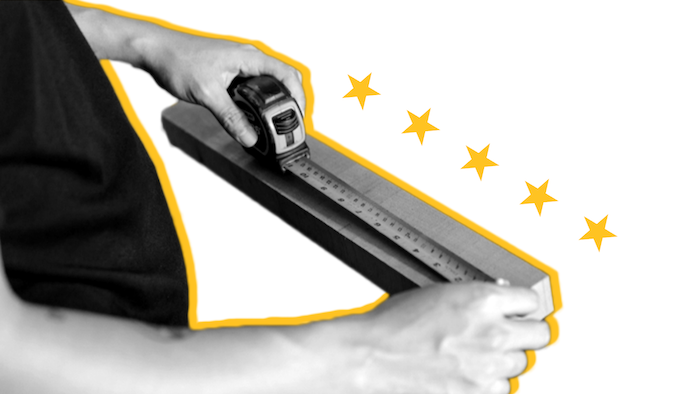If your residents are unhappy, reviews are trending negative, and the phone won’t stop ringing angrily, let’s face it - your property management strategy isn’t working. And now, your team desperately has to figure out why.
Resident experience surveys and metrics can help you understand how residents in your community really feel. Whether about maintenance, amenities, events—or maybe even the choice of elevator music.
It may seem overwhelming at times, but at least you’ll know. And, by analyzing these detailed metrics, you can pinpoint areas needing attention, improve property reputations, increase renewal rates, and ensure your residents’ needs are met throughout the lifecycle.

What is Resident Experience?
The definition of resident experience encompasses the full resident lifecycle - from the application process and move-in experience to interactions with management to move-out.
Resident experience metrics (lease conversion rate, surveys, response time, etc.) measure the quality of living experiences and provide insight into various aspects of community life.
Essential Resident Experience Metrics
Resident experience metrics are essential for guiding your management strategy. They reveal insights on maintenance reliability, amenity usage, and areas needing improvement. By focusing on these metrics, you enhance resident satisfaction, effectively increasing retention rates and strengthening your community’s reputation.
To consider metrics is to consider your residents. So here they come...
1. Property Resident Satisfaction Surveys
The more survey requests someone receives, the less likely they are to complete it. Sending out surveys twice a year is a good starting point to avoid survey fatigue and encourage participation.
Focus property resident satisfaction survey questions on unit quality, maintenance, community environment, and management responsiveness. Ask for reviews throughout the lifecycle after important touchpoints (tours, maintenance requests, renewals.)
The more effort you put into understanding the resident experience, the better your community’s reputation will be. Multifamily resident surveys are a sure way to gain a competitive advantage in your neighborhood. Or neighborhoods.
2. Lease Application Conversion Rate
Monitor the conversion rate of lease applications to signed leases. This metric reveals how effective your team is at guiding potential residents through the tour and application stages. A low conversion rate may indicate areas where your team can improve.
Maybe your team needs to enhance follow-up practices post-tour. Maybe your paperwork process is convoluted and needs to be simplified. By tracking lease conversion, your team can identify what’s working and what more it can do to convert interested applicants into signed leases.
3. Move-in Satisfaction Score
Residents are likely to share feedback when they are most engaged. Post-move-in is a great time to reach residents and gauge whether or not their experience went smoothly.
Sample questions to ask residents:
- “Were there any team members that stood out to you throughout the move-in process?”
- “What would you change about the move-in process?”
- “Is there anything more we can do to make you feel more at home in your new residence?”
4. Maintenance Request Response Time
Measure how quickly your team responds to maintenance requests within your community. Use maintenance logs or reviews to gauge how quickly and efficiently maintenance requests are fulfilled.
Maintenance is the most common driver of negative multifamily reviews. By investing in a streamlined maintenance process and taking note of what does and does not work, you will mitigate negative feedback and set your community up for success.
5. Amenity Usage Rates
Track how often residents use on-site amenities. Higher rates indicate valuable amenities; lower rates indicate a lack of necessity for residents or a need for improvement.
Sign-in sheets and digital access systems can track usage rates. By keeping track of how your residents respond to and use the amenities you offer, you gain a better understanding of your residents’ needs and values. You can use this information to inform future decisions and boost retention rates.
6. Event Participation and Feedback
Events foster community. Track residential event participation for a better understanding of what engages residents and how you can make your community feel more inclusive down the line.
Take inspiration from events held by other communities in the area. Use digital registration to measure what kinds of events draw the most interest. Some of our favorite community events we’ve seen include:
7. Renewal Rate
Measure renewal percentage to gauge retention and identify potential areas for improvement.
Low renewal rates indicate that your resident’s expectations are not being met. Maybe maintenance problems are not being adequately addressed. Maybe rent increases are prohibiting residents from renewing leases.
No matter the reason, target improvements based on feedback to enhance resident satisfaction and retention.
8. Complaint Resolution Time
How you handle complaints counts. Use reputation management technology and digital maintenance support to streamline the process and resident follow-up.
Have residents submit complaints and repair requests via an online portal or form. Provide them with the option to reach out to a real person (not a chatbot or voicemail box) for help should they need urgent assistance. Lastly, set benchmarks among your team for how long complaint resolution should ideally take within your community. If there are any obstacles, invest in training your teams to ensure clear communication and transparency with residents throughout the resolution stage.
9. Digital Platform Usage
If your community is supported by an online platform, measure how frequently residents use it. Low usage rates suggest you aren’t doing enough to promote the platform’s benefits to your community. ‘
Online portals can save your onsite teams a lot of time and energy - but only if your residents and team members are adequately trained on how to use them.
Measure the number of logins and interactions, and listen to feedback to gauge how comfortable residents are with your platform.
10. Exit Survey Feedback
Understanding the reasons for move-out helps property managers address recurring issues and improve retention.
Conduct online surveys and interviews, or ask for reviews during the move-out stage. Ask targeted questions to uncover common reasons for non-renewal, such as dissatisfaction with services, rent increases, or personal circumstances. Exit surveys can shed light on common problems within your community that you may not be aware of.
Implementing a Resident Experience Measurement Strategy
- Set Up a System: Successful property management is about choosing the right tools for your company.
Do you have a large portfolio? Is management centralized? Is your property a recent acquisition? The right reputation management software will support all aspects of your multifamily community.
- Analyze the Data: Use data visualization tools to identify trends and patterns.
- Focus on metrics that consistently show weak points.
- Break down data by resident demographics, unit types, or lease terms to identify specific areas of concern or satisfaction.
- Compare your data against industry benchmarks to see how your property stands in the market.
- Take Action: Create specific action plans to address any negative findings from your measurements. Focus on metrics that have the most significant impact on resident satisfaction such as maintenance response times or move-in satisfaction scores. Regularly review and adjust your strategy as performance changes.
By measuring and improving key aspects of the resident experience, you build stronger relationships, enhance your credibility, and attract new prospects.
Remember, a strong online reputation is not about perfection but about demonstrating your commitment to your residents. For more information on what residents are actually saying within their communities, check out the Multifamily Reputation Index.



U3GM Blog Post Comments